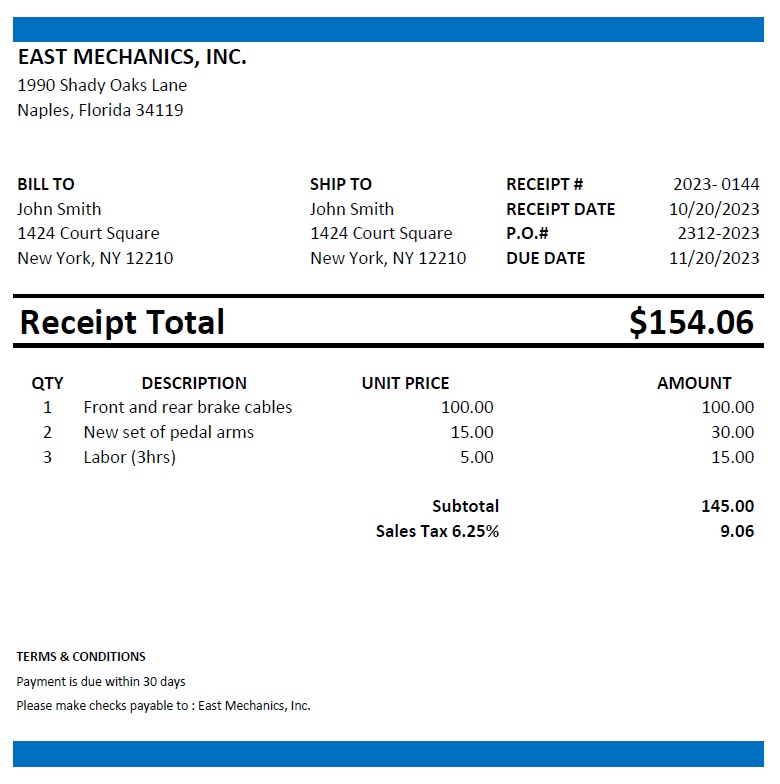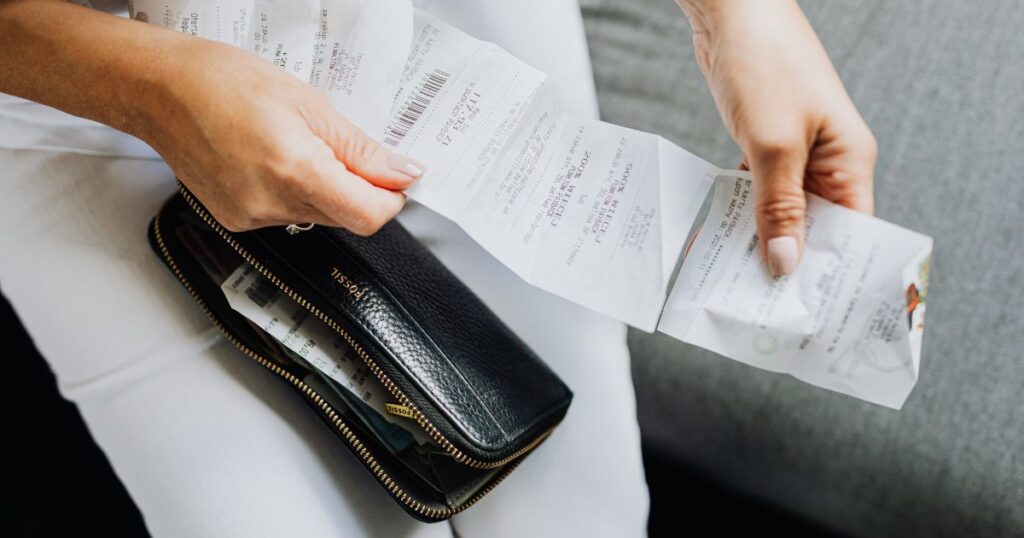Keeping track of your business sales is crucial. That’s why receipts are important because they prove that you’ve traded goods or services for money. Without it, it’s hard to show that a transaction happened, putting the buyer, seller, and your business at risk.
A receipt is a document that confirms a valuable exchange between two parties. It’s not just for regular consumers – businesses use them too, in both B2B deals and stock market trades.
In this article, you’ll learn what a receipt is, why having proof of payment matters, and examples of making one.
Understanding Receipts
A sales receipt is a document confirming a purchase. Sellers give this to buyers as proof of payment for a product or service.
Businesses use this for managing inventory and calculating taxes, while customers use it for accounting or reimbursement.
In business transactions, both consumers and businesses rely on receipts. For instance, in stock exchange deals, a business holding a futures contract gets a delivery instrument, which later acts as a receipt for exchanging the contract for the actual asset when it expires.
It usually has:
- Date of purchase
- Description of what was bought or the service received
- Price of the items or service
- Any sales tax added
- Payment method used (like credit card or cash)
Reasons for Providing Receipts
Receipts are given after purchase for several reasons:
- To show the buyer owns the item.
- It proves the buyer paid either fully or partially.
- Acts as proof of ownership for insurance.
- Confirms the buyer doesn’t need to pay sales tax again if it was already paid.
- Helps in accounting by documenting the transaction.
- Can be used as evidence of delivery when returning items under warranty.
Sellers usually generate it using a cash register, but sometimes they make them manually in specific situations.
Different Types of Receipts
It comes in various forms, whether physical or digital, and they all serve the same purpose. Here’s a breakdown of the different types:
Cash Register Receipts
These printed slips of paper are given to you after making a purchase, commonly seen in regular store transactions.
Handwritten Receipts
Service providers, like electricians, might provide you with a handwritten one after completing a job at your home.
Packing Slips
When you order items online, you’ll receive both an email receipt and a packing slip inside the package. Packing slips often include extra details like return policies.
Carbon Copies
Handwritten receipts are created using receipt notebooks with a special carbon layer. This layer copies the one onto the page beneath, allowing sellers to retain a copy.
Businesses need it to document their expenses. Small businesses can make different types of receipts to keep track of their operations, including:
- Gross receipts: These include cash register tapes, receipt books, deposit details (credit and cash sales), and invoices.
- Receipts for raw materials and purchases: These confirm necessary business purchases and show the amounts spent. They include details like the payee’s identity, the amount paid, canceled checks (if any), and proof of payment through checks or electronic transfers.
- Credit card statements: These are important for recording credit card expenses.
- Cash register tapes: Detailed records from cash sales.
- Petty cash slips: For small cash payments.
- Invoices: Documentation for business transactions.
Here’s a sample to show you how it should look. Every receipt must have the items you bought, the total cost, and the payment date.

Importance of Receipts
Receipts are crucial for businesses because they ensure accurate record-keeping. They help businesses track expenses and serve as important documents during tax audits. Keeping a record of past expenses helps companies plan for the future, especially for Small and Medium-sized Enterprises (SMEs). Additionally, proper recording enables businesses to monitor financial performance, create financial statements, track deductible expenses, and prepare tax returns easily.
IRS Rules for Electronic Receipts
Technology has made digital receipts common. Since 1997, the IRS has accepted scanned and digital ones for taxes. According to Revenue Procedure 97-22, digital receipts must be correct and easy to store, retrieve, and reproduce. Business owners must be able to provide a copy to the IRS.
Digital records don’t wear out like physical receipts, but they can be lost if a hard drive fails. Storing them on the cloud or in a secure location is a good idea.
Paper receipts can also be turned into digital format using scanners or mobile apps. This technology helps organize, create expense reports, and sync data with bookkeeping software.
How Long Should Receipts Be Kept for Tax Purposes?
For most expenses, it’s advisable to retain receipts and other records for a period of three years after filing taxes, as this aligns with the typical period of limitations. However, specific types of expenses, such as unreported income or bad debt deductions, may necessitate keeping records for six or seven years, according to IRS guidelines. It’s important to keep records indefinitely, especially in situations where a return is not filed or someone submits a fraudulent return.
Different countries have varying policies concerning the retention of business receipts:
United States (USA):
Ordinarily, tax records and receipts should be kept for at least three years from the tax return filing date. The IRS recommends a seven-year retention period for claims related to losses from worthless securities or bad debt deductions.
United Kingdom (UK):
In the UK, individuals and businesses are advised to keep tax records, including receipts, for a minimum of five years after the 31st January deadline of the relevant tax year.
Europe (varies by country):
Retention periods for tax records and receipts vary across European countries, with a general recommendation of at least five years. Specific regulations differ, this needs consultation with local tax authorities or accounting professionals for correct information.
Singapore:
In Singapore, both individuals and businesses must maintain proper records and accounts, including receipts and invoices, for a minimum of five years.
Hong Kong:
In Hong Kong, individuals and businesses are obligated to preserve records, such as receipts, invoices, and bank statements, pertaining to their tax affairs for at least seven years.
Japan:
In Japan, individuals and businesses are usually required to retain tax records and receipts for five years. Special circumstances or situations like filing amended returns might warrant keeping records for up to seven years.
Conclusion
The importance of keeping track of business sales through receipts cannot be overstated. It serve as critical documents that validate transactions, ensuring that both buyers and sellers have a reliable record of the exchange of goods or services for money. These important documents not only aid in verifying ownership, payment, and the need for future sales tax but also play a vital role in accounting, insurance, and warranty claims. In the business world, receipts are indispensable tools for managing inventory, calculating taxes, and maintaining financial records. Furthermore, understanding the duration for which it should be retained is crucial for tax compliance, with varying guidelines in different countries.





